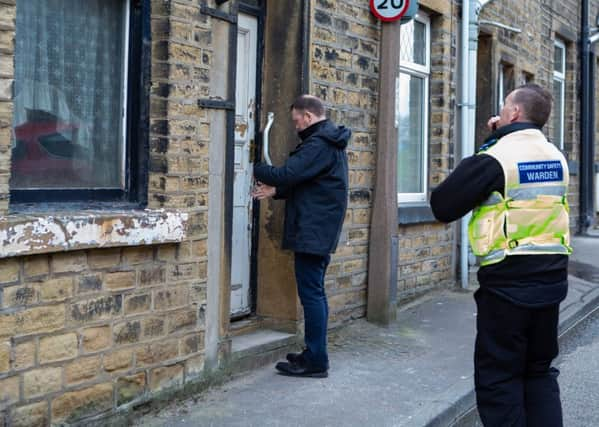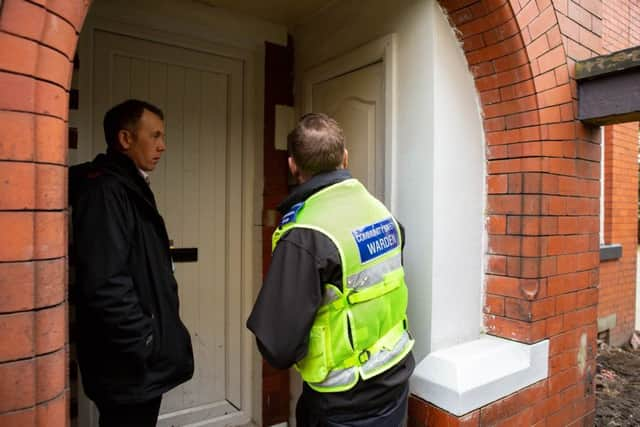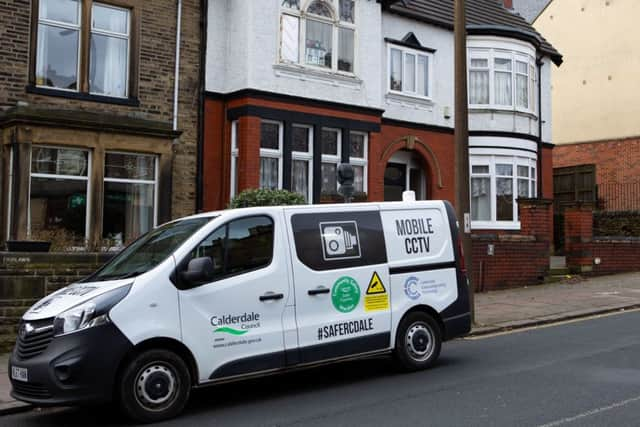“By doing things smarter, we can make more of a difference,” say Calderdale Council after service review


The decision involves closer working relationships, joint training and an increase in community safety wardens, and aims to make the most of the council’s decreasing resources and budgets.
To gain an insight into the department, reporter Tom Scargill followed staff on their work in the borough.
Advertisement
Hide AdAdvertisement
Hide AdHearing the council use words like ‘streamlined’ and ‘restructure’ immediately implies worse services due to cuts and less money.


And those involved in the council’s enforcement teams agree that budgets have shrunk, but they insist the changes will improve the service they provide.
“By joining up teams and doing things smarter, we can tackle problems more effectively and make more of a difference,” says Sarah Barker, senior community safety and resilience officer.
“Yes we might have fewer resources, but we’re working better because we’re all working together, sharing data and intelligence.”
Advertisement
Hide AdAdvertisement
Hide AdThe department has strong links to third sector groups such as Calderdale SmartMove in tackling homelessness, but has responsibilities in at least 17 different areas. That’s a lot of data and intelligence.


This comes from various sources - the public, other council departments or colleagues in enforcement - and can lead officers to any house, on any street in the borough, to help your neighbour or the person in-front of you at the bus stop or the supermarket queue.
“What goes on behind people’s front doors can be a real surprise. you’d be amazed,” says Dave Dunbar, senior environmental health officer, who gives a guided tour of a one bedroom terraced property belonging to a a retired, disabled woman who was known to adult social services.
She has been temporarily re-homed in social housing while the council cleans and repairs what was “a mess”.
Advertisement
Hide AdAdvertisement
Hide Ad“It took six contractors a day to clean it, physically moving stuff out,” says Dave.
“There were piles of food, newspapers, you name it. You couldn’t see the floor.
“She had a little space behind the bedroom door to get into bed, but I couldn’t get to the windows because it was piled up with stuff.
“The bathroom floor was covered in a foot of soggy toilet paper.
Advertisement
Hide AdAdvertisement
Hide Ad“If this was my parent living here, I’d be mortified. I feel we’ve got a moral as well as a legal obligation to help people.
“That’s a big part of what the council does.
“I was worried she’d fall through the floor, so safety-wise we got her out quite quickly, with her consent.
“She’s desperate to come back, which is her choice, but we can’t let her do that in the state it was in.
“But having her back home means she’s not in a care home, and because she’s got better well-being, she’s not using NHS services.
Advertisement
Hide AdAdvertisement
Hide Ad“So a bit of work now is beneficial long-term to everybody.”
When asked if this was one of the worst examples he had seen, Dave puts it at only a six-out-of-ten, before describing another house whose owner, an elderly man, has 14 fridge freezers full of rotten food, mouldy pots and pans everywhere and a carpet wet through.
“His mobility is limited, and if he was to fall over, because his phone’s not working, nobody would know.
“I’m really worried about him because the floor is really slippy. He’s taken to weeing in bottles on the ground floor.
Advertisement
Hide AdAdvertisement
Hide Ad“That’s getting cleaned this week. The ground floor there is a 10.
“He’s insistent he doesn’t want to move out.
“If you saw him walking down the street, you wouldn’t think twice.”
Dave and his colleagues can use ‘power of entry’ - at 24 hours notice with most properties - so they can gain access to houses where they feel occupants desperately need help.
There are also “properties of interest” that the council keep an eye on, that may have vulnerable children or contain illegal activity.
Advertisement
Hide AdAdvertisement
Hide AdAny uninhabitable homes are first cleared out, then cleaned and repaired - with the council recovering the costs at a later date - before possible adaptations are undertaken.
Daniella Condon, one of three technical officers from the Accessible Homes team, has 87 jobs on the go at once and reckons she deals with several hundred adaptation cases a year, and around a thousand minor projects such as grab rails or half-steps.
“It ranges from the smallest thing, like putting a grab rail on for somebody, up to building extensions.
“The bread and butter of what we do is wet rooms, stair-lifts and ramps.
Advertisement
Hide AdAdvertisement
Hide Ad“A bathroom can cost between £4,000 and £7,000, stair-lifts between £3,000 and £6,000.”
Dave fears there are lots of other people in the borough in need of help behind closed doors.
“Contact the council, we can help,” he says.
“I worry about people who don’t know what to do or who to turn to.
“People don’t need to be ashamed or embarrassed, everything can be done confidentially.
Advertisement
Hide AdAdvertisement
Hide Ad“Mental health, well-being and loneliness can all play a part.
“In 2019, how can we let someone live like that? It’s just not right.
“We’re human beings and we all have to look after each other.
“Right place, right time, right resource. That’s what we’re aiming for. And we’re getting there.”
Advertisement
Hide AdAdvertisement
Hide AdWhen asked what the biggest issue is for the Environmental Health team, Dave said: “Some people will think fly-tipping is the biggest problem because it happens in their area, but there’s a mix of everything.
“We’ve got a lot of fantastic spaces in Calderdale. Unfortunately it’s just a minor few that don’t respect that, and they’re the people we need to get to.
“There are peaks and troughs. We tend to see more fly-tipping when the nights are darker.
“Dog fouling happens at any time. People think they can get away with things, but there are laws we all have to respect and live by.”
Advertisement
Hide AdAdvertisement
Hide Ad“If you’re going to report something, give us as much information as you can so that we can take it further,” adds Sarah.
“Be specific, take pictures if you can. Give us the full picture so that we can carry it on.
“We do need the public to play their part.”
Coun Susan Press, Calderdale Council’s Cabinet Member for Communities and Neighbourhood Services, said: “We’re taking a new, more efficient, firm but fair approach to enforcement. We committed to doing this in the Council’s 2018 budget, and local people tell us how important it is to tackle issues like fly-tipping, anti-social behaviour, planning breaches and dangerous housing conditions.
“Our new approach, based on partnership working and early intervention, will ensure that issues are quickly passed to the right people, to stop issues escalating in severity and cost.
“We won’t hesitate to take enforcement action, challenge repeat offending and use our full range of powers as appropriate.”